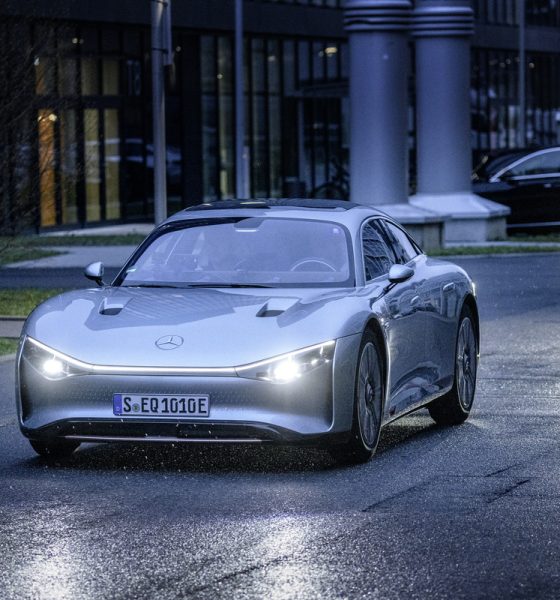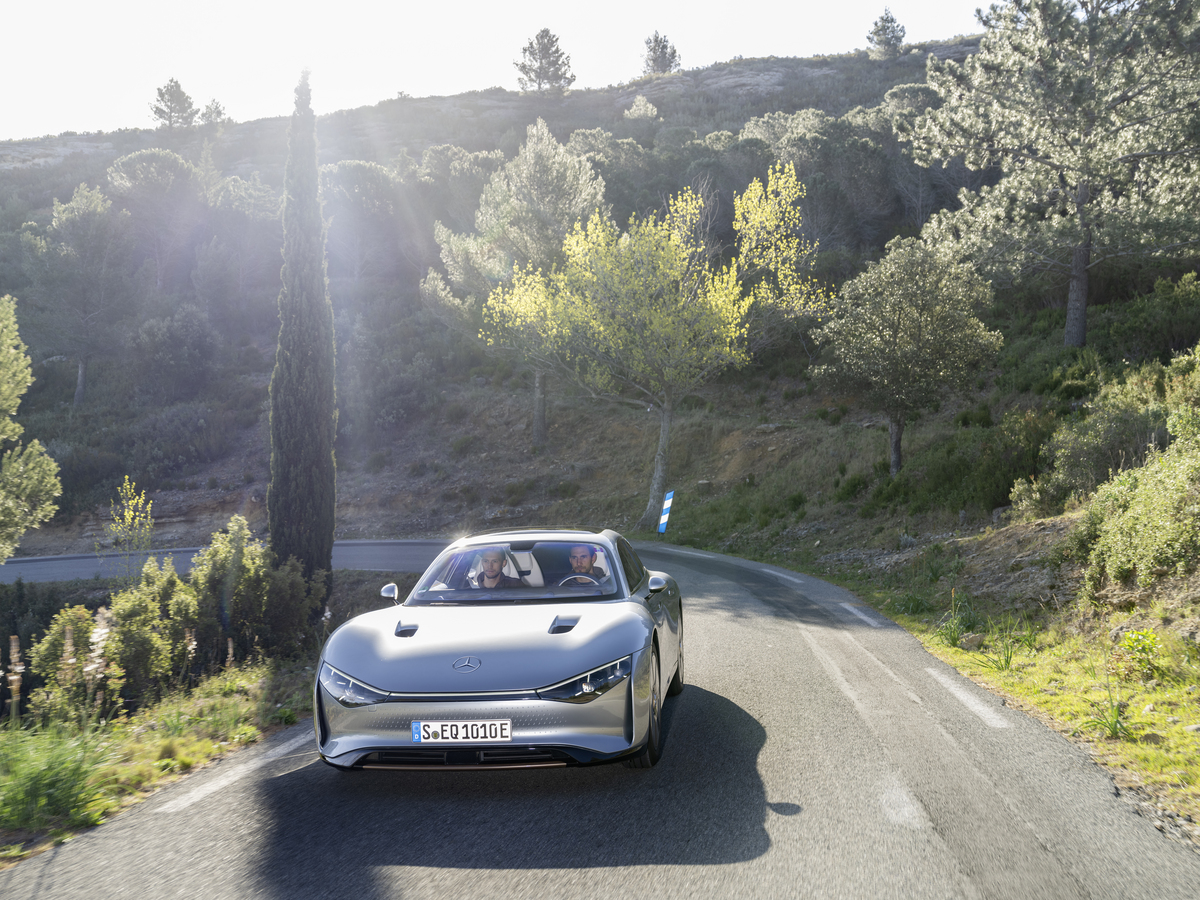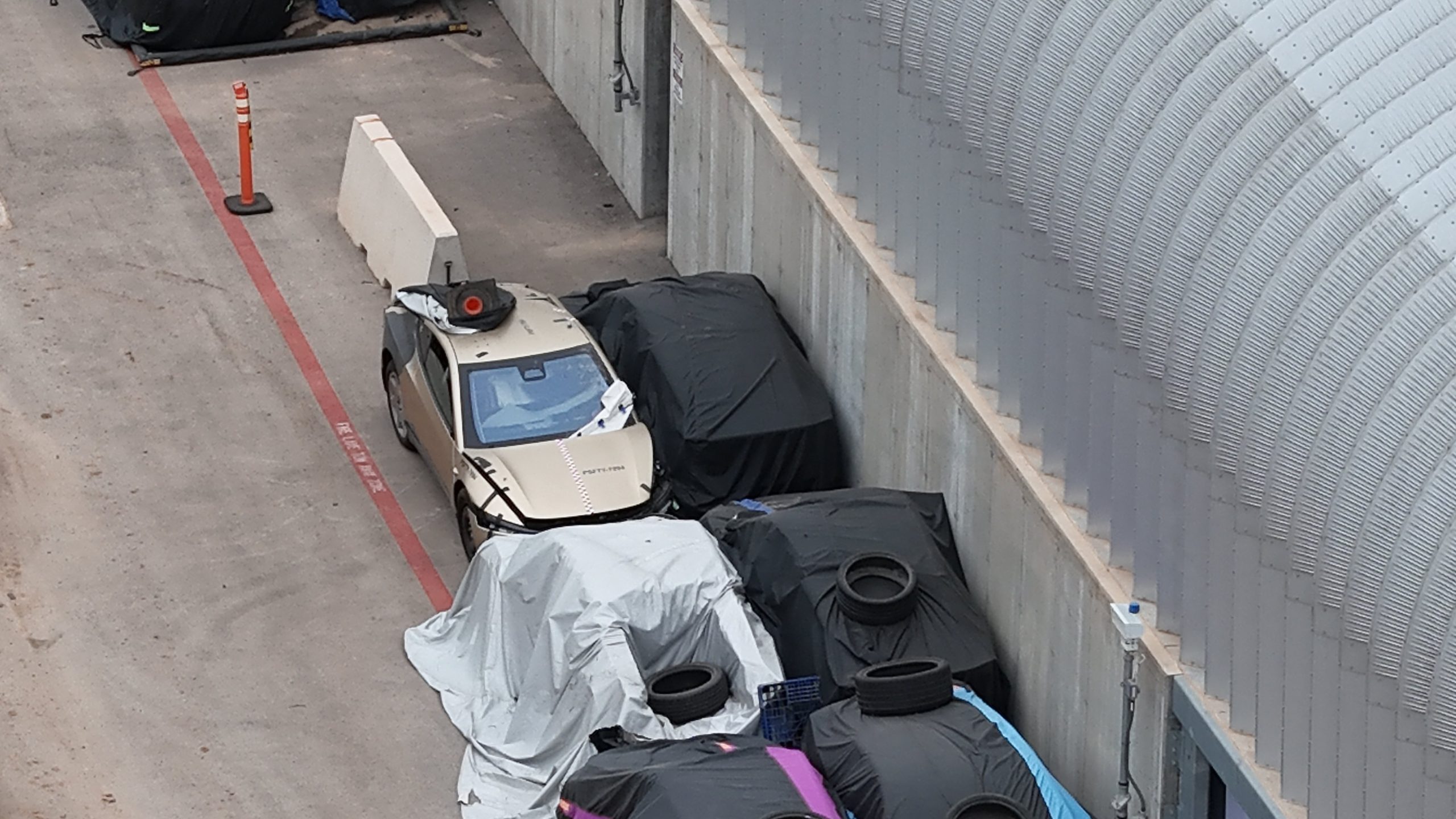

News
Why Tesla won’t lose sleep over other automakers achieving massive range ratings
Tesla is normally confronted with plenty of interesting and challenging metrics from competitors, especially in terms of range and speed. With the Mercedes-Benz VISION EQXX accomplishing a major feat of over 1,000 kilometers (620 miles) driven on a single charge earlier this week, many may wonder if Tesla engineers are scrambling around attempting to crank out some new EV with 2,000 kilometers of range. I can assure you they are not.
The accomplishments of Mercedes-Benz in its electric vehicle program are not to be slighted. While the luxury automaker is working to develop and ramp its EQ lineup, which will consist of fully and partially electric vehicles, Mercedes is definitely coming out with some pretty interesting and eye-grabbing records and points of strength, especially indicated in its most recent range ratings and assessments of its semi-autonomous driving functionality. Its most recent release from April 13 tells us the story of the VISION EQXX and how it drove 626 total miles on a charge.
“We did it! Powering through more than 1,000 kilometers with ease on a single battery charge and a consumption of only 8.7 kWh/100 km (7.1 kWh per 62 miles) in real-world traffic conditions,” Ola Källenius, Charman of the Board of Management for Mercedes-Benz Group AG, said. “The VISION EQXX is the most efficient Mercedes ever built. The technology program behind it marks a milestone in the development of electric vehicles. It underpins our strategic aim to ‘Lead in Electric.’”
Traveling on a route through Germany and Italy, crossing the towns and cities of Sindelfingen, Gotthard Tunnel, Milan, and Cassis, 11 hours and 32 minutes of driving time ended its 626-mile trek successfully with a single charge.
Erfolgreicher Roadtrip MissionXX – von Sindelfingen über die Schweizer Alpen nach Cassis an der Côte d’Azur. Der Mercedes-Benz VISION EQXX fährt über 1.000 km mit einer Batterieladung und einem Durchschnittsverbrauch von 8,7 kWh/100 km. // Successful MissionXX road trip – from Sindelfingen across the Swiss Alps to Cassis on the Cote d’Azur. The Mercedes-Benz VISION EQXX sets efficiency record – over 1,000 km on a single battery charge and average consumption of 8.7 kWh/100 km.
Many of those interested in electric vehicles may be thinking, “This is just another thing Tesla has been beaten on.” “It’s only a matter of time before others do it, too.” “Tesla won’t achieve this, they’re stuck in the 400-mile range threshold.”
Tesla, as a company, is likely excited other companies are accomplishing these endurance-type runs so they don’t have to. If the automotive industry in 2022 was the same as what it was in 2010: a gas engine-dominated sector with relatively no electric options, then sure, maybe Tesla would care. But maybe not. The landscape of the EV industry has become so obsessed with these incredible metrics that many consumers forget they won’t need over 600 miles of range. How many gas car drivers go to a dealership thinking, “I will only buy a car if it offers me 620 miles of driving on a tank?”
CEO Elon Musk even stated recently that having “too much” range is not necessarily a good thing for electric vehicles.
“We could’ve made a 600-mile Model S 12 months ago, but that would’ve made the product worse imo, as 99.9% of time you’d be carrying unneeded battery mass, which makes acceleration, handling & efficiency worse,” Musk said recently. “Even our 400+ mile range car is more than almost anyone will use.” ABC News says the average American only travels sixteen miles per day for work. U.S. Census data even says Americans only spend around 27.6 minutes driving to work one way.
Tesla has held this perspective for some time. “Mass is the enemy of both efficiency and performance, and minimizing the weight of every component is an ongoing goal for our design and engineering teams,” it said in a blog post announcing the 400-mile Model S in June 2020.“Several lessons from the engineering design and manufacturing of Model 3 and Model Y have now been carried over to Model S and Model X. This has unlocked new areas of mass reduction while maintaining the premium feel and performance of both vehicles. Additional weight savings have also been achieved through the standardization of Tesla’s in-house seat manufacturing and lighter weight materials used in our battery pack and drive units.”
While there is certainly no reason to knock on Mercedes-Benz’s accomplishments, there needs to be a relative sense of what is ultimately appropriate in terms of EV range. Endurance runs are completely legitimate and interesting ways to prove your battery and efficiency metrics, but they’re not something proven EV companies will look at down the road. The successful automakers will be focusing on avoiding supply chain issues, ramping battery supply chain manufacturing, becoming more vertically integrated, and working to create price parity between EVs and their gas counterparts.
I’d love to hear from you! If you have any comments, concerns, or questions, please email me at joey@teslarati.com. You can also reach me on Twitter @KlenderJoey, or if you have news tips, you can email us at tips@teslarati.com.

News
Tesla is not sparing any expense in ensuring the Cybercab is safe
Images shared by the longtime watcher showed 16 Cybercab prototypes parked near Giga Texas’ dedicated crash test facility.

The Tesla Cybercab could very well be the safest taxi on the road when it is released and deployed for public use. This was, at least, hinted at by the intensive safety tests that Tesla seems to be putting the autonomous two-seater through at its Giga Texas crash test facility.
Intensive crash tests
As per recent images from longtime Giga Texas watcher and drone operator Joe Tegtmeyer, Tesla seems to be very busy crash testing Cybercab units. Images shared by the longtime watcher showed 16 Cybercab prototypes parked near Giga Texas’ dedicated crash test facility just before the holidays.
Tegtmeyer’s aerial photos showed the prototypes clustered outside the factory’s testing building. Some uncovered Cybercabs showed notable damage and one even had its airbags engaged. With Cybercab production expected to start in about 130 days, it appears that Tesla is very busy ensuring that its autonomous two-seater ends up becoming the safest taxi on public roads.
Prioritizing safety
With no human driver controls, the Cybercab demands exceptional active and passive safety systems to protect occupants in any scenario. Considering Tesla’s reputation, it is then understandable that the company seems to be sparing no expense in ensuring that the Cybercab is as safe as possible.
Tesla’s focus on safety was recently highlighted when the Cybertruck achieved a Top Safety Pick+ rating from the Insurance Institute for Highway Safety (IIHS). This was a notable victory for the Cybertruck as critics have long claimed that the vehicle will be one of, if not the, most unsafe truck on the road due to its appearance. The vehicle’s Top Safety Pick+ rating, if any, simply proved that Tesla never neglects to make its cars as safe as possible, and that definitely includes the Cybercab.
Elon Musk
Tesla’s Elon Musk gives timeframe for FSD’s release in UAE
Provided that Musk’s timeframe proves accurate, FSD would be able to start saturating the Middle East, starting with the UAE, next year.

Tesla CEO Elon Musk stated on Monday that Full Self-Driving (Supervised) could launch in the United Arab Emirates (UAE) as soon as January 2026.
Provided that Musk’s timeframe proves accurate, FSD would be able to start saturating the Middle East, starting with the UAE, next year.
Musk’s estimate
In a post on X, UAE-based political analyst Ahmed Sharif Al Amiri asked Musk when FSD would arrive in the country, quoting an earlier post where the CEO encouraged users to try out FSD for themselves. Musk responded directly to the analyst’s inquiry.
“Hopefully, next month,” Musk wrote. The exchange attracted a lot of attention, with numerous X users sharing their excitement at the idea of FSD being brought to a new country. FSD (Supervised), after all, would likely allow hands-off highway driving, urban navigation, and parking under driver oversight in traffic-heavy cities such as Dubai and Abu Dhabi.
Musk’s comments about FSD’s arrival in the UAE were posted following his visit to the Middle Eastern country. Over the weekend, images were shared online of Musk meeting with UAE Defense Minister, Deputy Prime Minister, and Dubai Crown Prince HH Sheikh Hamdan bin Mohammed. Musk also posted a supportive message about the country, posting “UAE rocks!” on X.
FSD recognition
FSD has been getting quite a lot of support from foreign media outlets. FSD (Supervised) earned high marks from Germany’s largest car magazine, Auto Bild, during a test in Berlin’s challenging urban environment. The demonstration highlighted the system’s ability to handle dense traffic, construction sites, pedestrian crossings, and narrow streets with smooth, confident decision-making.
Journalist Robin Hornig was particularly struck by FSD’s superior perception and tireless attention, stating: “Tesla FSD Supervised sees more than I do. It doesn’t get distracted and never gets tired. I like to think I’m a good driver, but I can’t match this system’s all-around vision. It’s at its best when both work together: my experience and the Tesla’s constant attention.” Only one intervention was needed when the system misread a route, showcasing its maturity while relying on vision-only sensors and over-the-air learning.
News
Tesla quietly flexes FSD’s reliability amid Waymo blackout in San Francisco
“Tesla Robotaxis were unaffected by the SF power outage,” Musk wrote in his post.

Tesla highlighted its Full Self-Driving (Supervised) system’s robustness this week by sharing dashcam footage of a vehicle in FSD navigating pitch-black San Francisco streets during the city’s widespread power outage.
While Waymo’s robotaxis stalled and caused traffic jams, Tesla’s vision-only approach kept operating seamlessly without remote intervention. Elon Musk amplified the clip, highlighting the contrast between the two systems.
Tesla FSD handles total darkness
The @Tesla_AI account posted a video from a Model Y operating on FSD during San Francisco’s blackout. As could be seen in the video, streetlights, traffic signals, and surrounding illumination were completely out, but the vehicle drove confidently and cautiously, just like a proficient human driver.
Musk reposted the clip, adding context to reports of Waymo vehicles struggling in the same conditions. “Tesla Robotaxis were unaffected by the SF power outage,” Musk wrote in his post.
Musk and the Tesla AI team’s posts highlight the idea that FSD operates a lot like any experienced human driver. Since the system does not rely on a variety of sensors and a complicated symphony of factors, vehicles could technically navigate challenging circumstances as they emerge. This definitely seemed to be the case in San Francisco.
Waymo’s blackout struggles
Waymo faced scrutiny after multiple self-driving Jaguar I-PACE taxis stopped functioning during the blackout, blocking lanes, causing traffic jams, and requiring manual retrieval. Videos shared during the power outage showed fleets of Waymo vehicles just stopping in the middle of the road, seemingly confused about what to do when the lights go out.
In a comment, Waymo stated that its vehicles treat nonfunctional signals as four-way stops, but “the sheer scale of the outage led to instances where vehicles remained stationary longer than usual to confirm the state of the affected intersections. This contributed to traffic friction during the height of the congestion.”
A company spokesperson also shared some thoughts about the incidents. “Yesterday’s power outage was a widespread event that caused gridlock across San Francisco, with non-functioning traffic signals and transit disruptions. While the failure of the utility infrastructure was significant, we are committed to ensuring our technology adjusts to traffic flow during such events,” the Waymo spokesperson stated, adding that it is “focused on rapidly integrating the lessons learned from this event, and are committed to earning and maintaining the trust of the communities we serve every day.”








